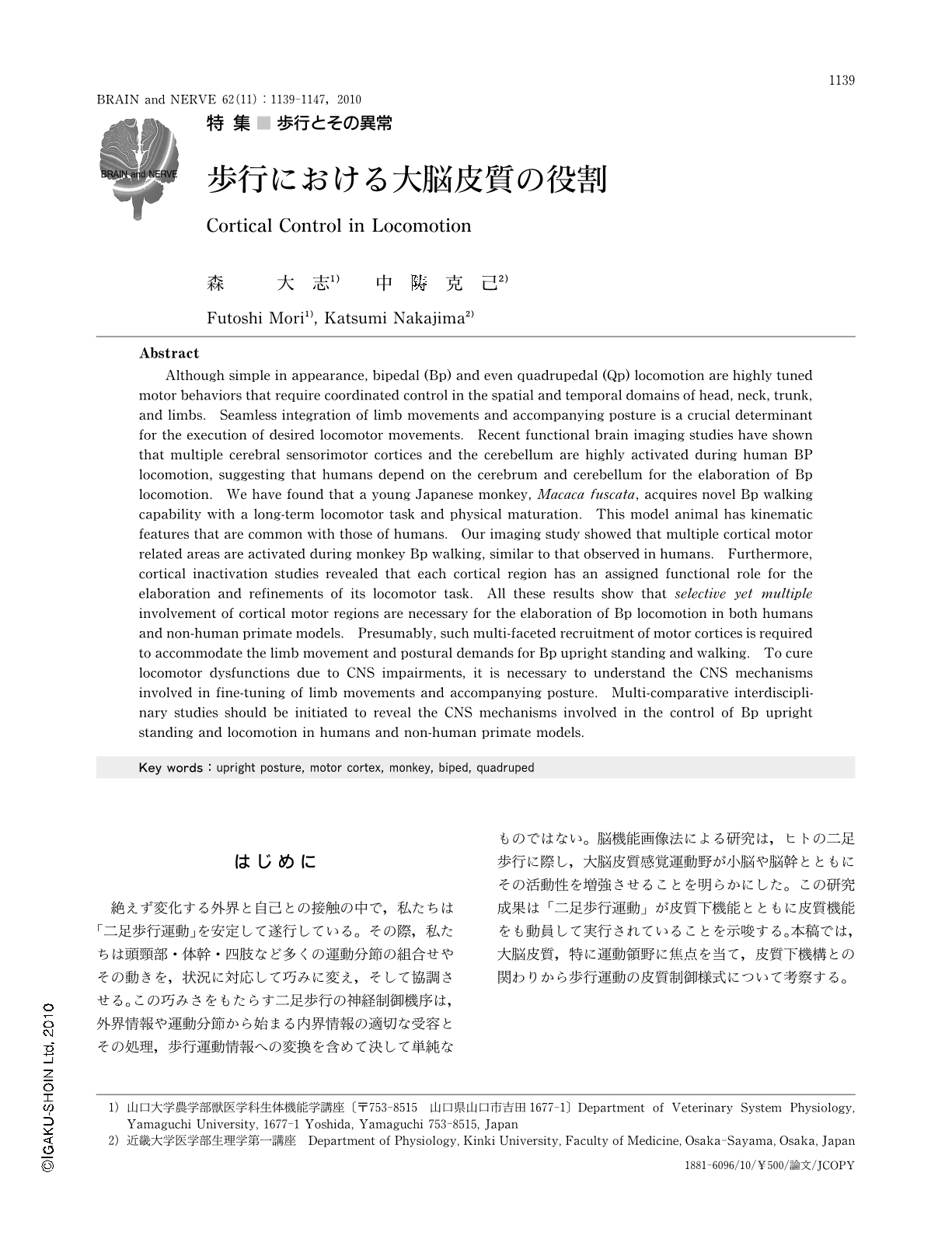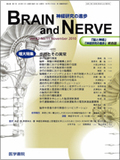Japanese
English
- 有料閲覧
- Abstract 文献概要
- 1ページ目 Look Inside
- 参考文献 Reference
はじめに
絶えず変化する外界と自己との接触の中で,私たちは「二足歩行運動」を安定して遂行している。その際,私たちは頭頸部・体幹・四肢など多くの運動分節の組合せやその動きを,状況に対応して巧みに変え,そして協調させる。この巧みさをもたらす二足歩行の神経制御機序は,外界情報や運動分節から始まる内界情報の適切な受容とその処理,歩行運動情報への変換を含めて決して単純なものではない。脳機能画像法による研究は,ヒトの二足歩行に際し,大脳皮質感覚運動野が小脳や脳幹とともにその活動性を増強させることを明らかにした。この研究成果は「二足歩行運動」が皮質下機能とともに皮質機能をも動員して実行されていることを示唆する。本稿では,大脳皮質,特に運動領野に焦点を当て,皮質下機構との関わりから歩行運動の皮質制御様式について考察する。
Abstract
Although simple in appearance,bipedal (Bp) and even quadrupedal (Qp) locomotion are highly tuned motor behaviors that require coordinated control in the spatial and temporal domains of head,neck,trunk,and limbs. Seamless integration of limb movements and accompanying posture is a crucial determinant for the execution of desired locomotor movements. Recent functional brain imaging studies have shown that multiple cerebral sensorimotor cortices and the cerebellum are highly activated during human BP locomotion,suggesting that humans depend on the cerebrum and cerebellum for the elaboration of Bp locomotion. We have found that a young Japanese monkey,Macaca fuscata,acquires novel Bp walking capability with a long-term locomotor task and physical maturation. This model animal has kinematic features that are common with those of humans. Our imaging study showed that multiple cortical motor related areas are activated during monkey Bp walking,similar to that observed in humans. Furthermore,cortical inactivation studies revealed that each cortical region has an assigned functional role for the elaboration and refinements of its locomotor task. All these results show that selective yet multiple involvement of cortical motor regions are necessary for the elaboration of Bp locomotion in both humans and non-human primate models. Presumably,such multi-faceted recruitment of motor cortices is required to accommodate the limb movement and postural demands for Bp upright standing and walking. To cure locomotor dysfunctions due to CNS impairments,it is necessary to understand the CNS mechanisms involved in fine-tuning of limb movements and accompanying posture. Multi-comparative interdisciplinary studies should be initiated to reveal the CNS mechanisms involved in the control of Bp upright standing and locomotion in humans and non-human primate models.

Copyright © 2010, Igaku-Shoin Ltd. All rights reserved.


